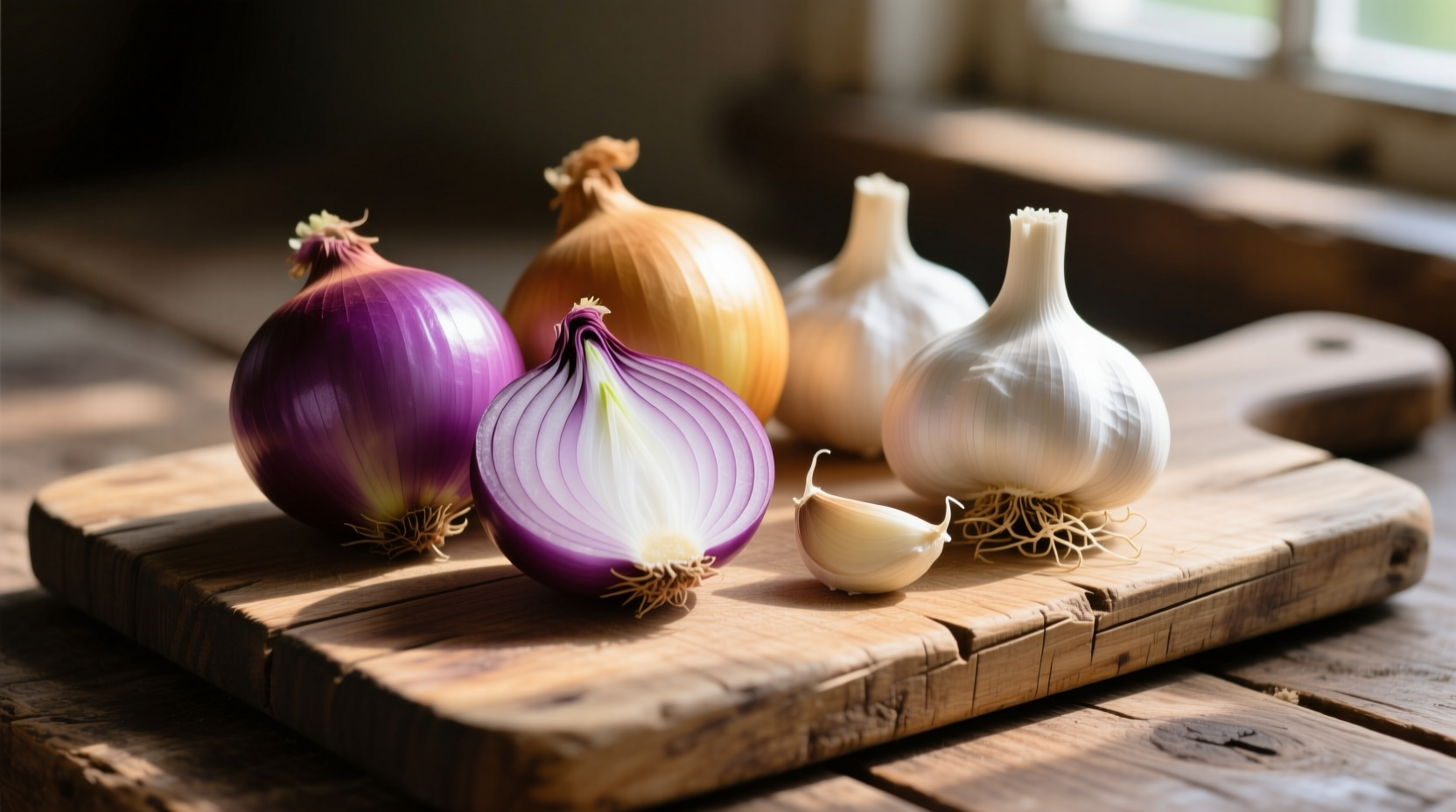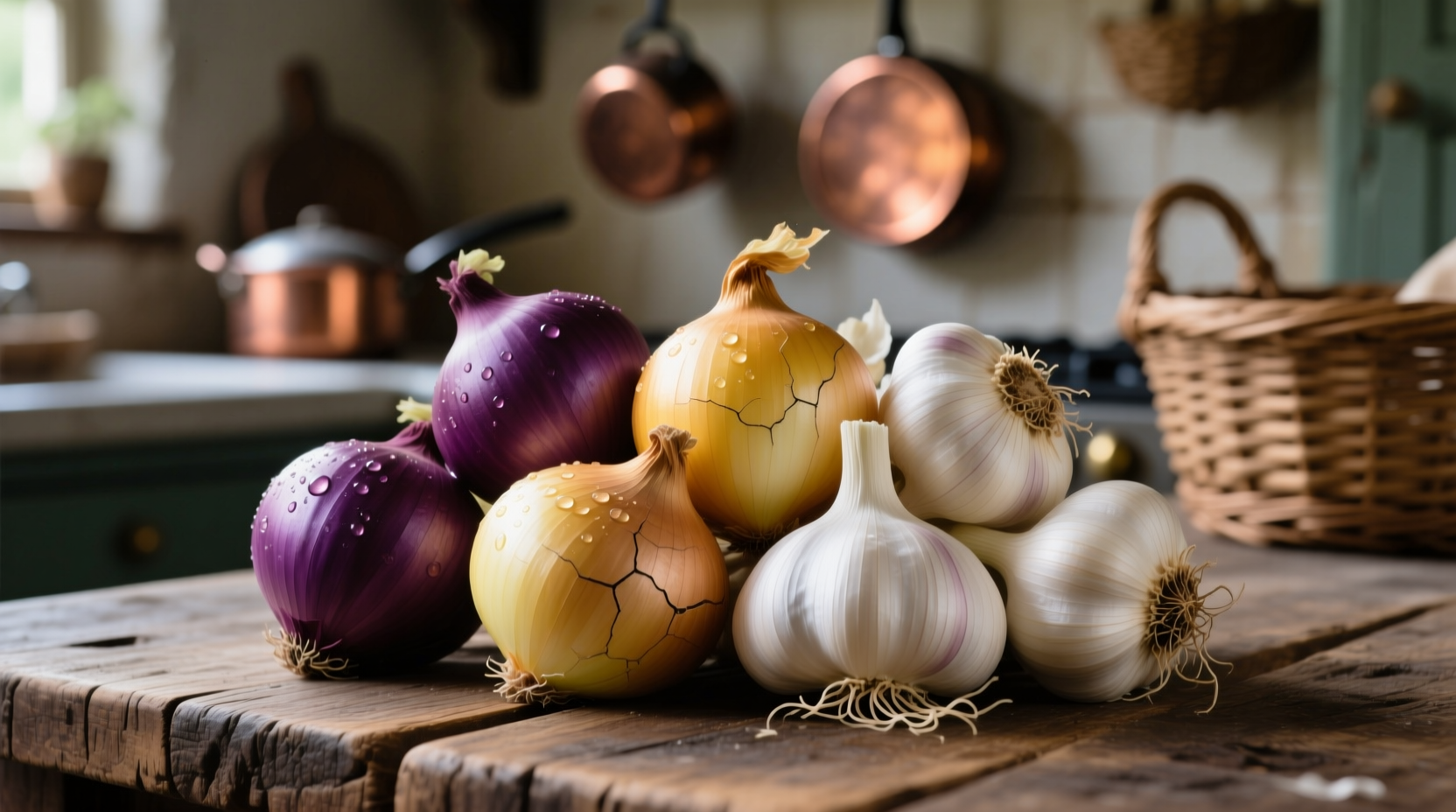Onion and garlic are distinct allium vegetables with different flavor profiles, culinary uses, and chemical compositions. While they share the same plant family (Amaryllidaceae), they cannot be used interchangeably without altering dish outcomes. Understanding their unique properties helps home cooks maximize flavor potential in recipes.
Understanding Onion and Garlic: More Than Just Aromatic Alliums
When you reach for that recipe calling for "onion and garlic," do you ever wonder why both are needed? Many home cooks treat these kitchen staples as interchangeable, but their distinct chemical compositions create different flavor transformations when cooked. Let's explore what makes each unique and how to leverage their individual strengths.

Botanical Basics: What Makes Onion and Garlic Different
Though both belong to the Allium genus, onion (Allium cepa) and garlic (Allium sativum) have significant biological differences that affect their culinary applications. Onions form single layered bulbs, while garlic develops into multiple cloves encased in a papery husk. This structural difference impacts how their flavor compounds are released during preparation.
| Characteristic | Onion | Garlic |
|---|---|---|
| Primary flavor compound | Propanethial S-oxide (causes tearing) | Allicin (creates pungent aroma) |
| Flavor development time | Immediate sharpness | Peaks after 10 minutes of chopping |
| Heat stability | Breaks down quickly | More heat-stable compounds |
| Raw flavor profile | Sharp, pungent, slightly sweet | Intensely pungent, spicy bite |
Culinary Chemistry: How Flavor Compounds Transform During Cooking
Understanding the science behind these alliums transforms your cooking results. When you chop onions, enzymes create volatile compounds that cause tearing but mellow with cooking. Garlic's allicin forms when cells are damaged, creating that characteristic aroma that intensifies before mellowing.
Professional chefs time their additions carefully: onions first, garlic later. Adding garlic too early causes burning (garlic's compounds degrade at lower temperatures than onions'). This explains why many recipes specify "sauté onions until translucent, then add garlic for 30 seconds."
When to Use Each Allium: Practical Kitchen Applications
Each allium serves distinct purposes in flavor development:
Onion's Culinary Strengths
- Creates foundational sweetness in sauces and soups
- Provides textural element when caramelized
- Works well raw in salads and salsas (especially sweet varieties)
- Essential for building flavor bases (mirepoix, sofrito)
Garlic's Culinary Strengths
- Adds pungent depth to sauces and marinades
- Creates distinctive aroma when roasted whole
- Essential for Mediterranean and Asian flavor profiles
- Provides antimicrobial properties in preserved foods
Combining Onion and Garlic: Best Practices for Flavor Harmony
When used together properly, these alliums create complex flavor foundations. The USDA Agricultural Research Service confirms that combining alliums creates synergistic flavor compounds not present when used separately (USDA ARS, 2023).
Follow these professional techniques:
- Start with onions: Sauté in fat until translucent (5-7 minutes)
- Add garlic later: Incorporate when onions are halfway cooked
- Control heat: Keep temperature below 325°F (163°C) to prevent burning
- Consider form: Use minced garlic for quick dishes, whole cloves for slow cooking
Substitution Guidelines: When You're Missing One Allium
While not perfect substitutes, these alternatives work in emergencies:
- Replacing garlic: Use 1/8 teaspoon garlic powder per clove, or 1 tablespoon minced shallot
- Replacing onion: Use 1/4 cup finely chopped leeks or 2 tablespoons onion powder
- Important limitation: Never substitute raw garlic for raw onion (garlic's intensity overwhelms)
Remember that substitutions alter flavor profiles significantly. The University of California Food Science Department notes that garlic contains 200+ sulfur compounds compared to onion's 50+, creating fundamentally different chemical interactions in dishes (UC Davis, 2024).
Storage Secrets for Maximum Freshness
Proper storage preserves flavor compounds:
- Whole bulbs: Store in cool, dark place with good air circulation
- Chopped garlic: Mix with oil and refrigerate for up to 1 week
- Chopped onions: Store in airtight container for 3-4 days
- Never refrigerate whole bulbs: Causes sprouting and texture changes
The National Onion Association confirms that proper storage maintains the integrity of flavor compounds, preventing premature breakdown of volatile sulfur compounds that create distinctive tastes (NOA, 2024).
Common Questions About Onion and Garlic
Can I use onion powder instead of garlic powder in recipes?
No, onion powder and garlic powder are not interchangeable. They contain different chemical compounds that create distinct flavor profiles. Substituting one for the other will significantly alter your dish's intended flavor. If you must substitute, use 3 parts onion powder for every 1 part garlic powder required, but expect noticeable flavor differences.
Why does garlic sometimes turn blue when cooking with onions?
This harmless color change occurs when garlic's sulfur compounds react with copper traces in water or cookware, especially when combined with onions' acidic compounds. The reaction is accelerated by heat and doesn't affect flavor or safety. To prevent it, use distilled water and non-reactive cookware when preparing garlic-onion mixtures.
Which has more health benefits: onion or garlic?
Both offer significant health benefits but with different strengths. Garlic contains higher concentrations of allicin, which has documented cardiovascular benefits. Onions provide more quercetin, a powerful antioxidant. For maximum health benefits, include both in your diet as they complement each other's nutritional profiles according to research from the American Journal of Clinical Nutrition.
Can I plant grocery store onions and garlic?
Yes, but with limitations. Grocery store bulbs may have been treated to prevent sprouting. Organic varieties work best for planting. Plant individual cloves (garlic) or separate onion layers in well-draining soil. Note that commercial varieties might not be optimized for your climate, so yields may be lower than purpose-bought gardening varieties.











 浙公网安备
33010002000092号
浙公网安备
33010002000092号 浙B2-20120091-4
浙B2-20120091-4